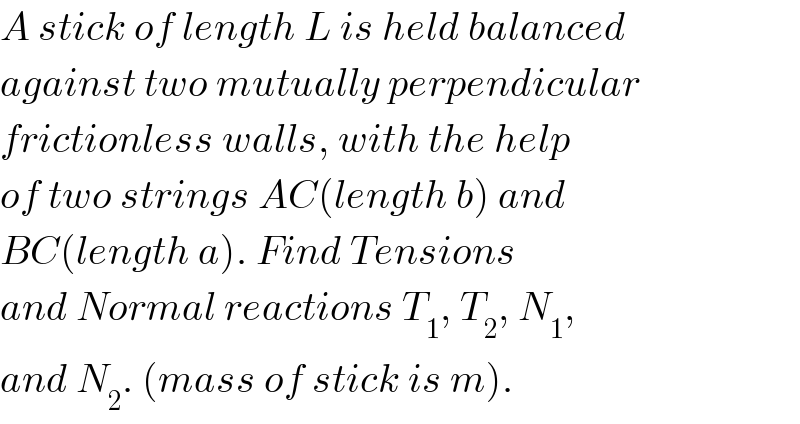
Question and Answers Forum
Question Number 47005 by ajfour last updated on 03/Nov/18

Commented by ajfour last updated on 03/Nov/18

Answered by MrW3 last updated on 04/Nov/18

Commented by MrW3 last updated on 04/Nov/18

| ||
Question and Answers Forum | ||
Question Number 47005 by ajfour last updated on 03/Nov/18 | ||
 | ||
Commented by ajfour last updated on 03/Nov/18 | ||
 | ||
Answered by MrW3 last updated on 04/Nov/18 | ||
 | ||
Commented by MrW3 last updated on 04/Nov/18 | ||
 | ||